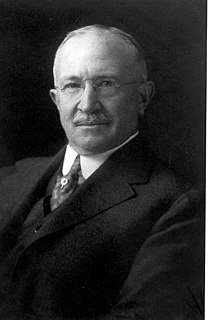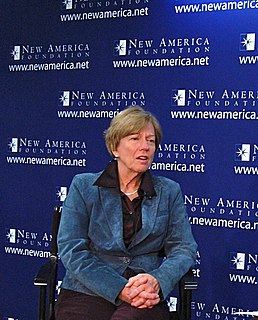A major contributor to this article appears to have a close connection with its subject.(June 2015) (Learn how and when to remove this template message) |
Jay Stauffer Jr. is a Distinguished Professor of Ichthyology at Pennsylvania State University.
A major contributor to this article appears to have a close connection with its subject.(June 2015) (Learn how and when to remove this template message) |
Jay Stauffer Jr. is a Distinguished Professor of Ichthyology at Pennsylvania State University.
He received his BS from Cornell University in 1972 and his Ph.D. from the Virginia Polytechnic Institute and State University in 1975. [1] From April 1975 until June 1984 he was an assistance professor for Appalachian Environmental Laboratory, Center for Environmental and Estuarine Studies at the University of Maryland. Since July 1984, he has been with the Penn State School of Forest Resources, first as an Associate Professor of Fishery Science from July 1984 to June 1988. Then as a Professor of Ichthyology from July 1988 until December 2005. And now as a Distinguished Professor of Ichthyology from January 2007 to the present. [1]
He was elected to the graduate faculty at the University of Maryland in the Fall of 1978 and to the Pennsylvania State University Graduate Faculty in 1984.
He has published dozens of articles including: [2]
Professor Stauffer is certified as a Professional Fisheries Biologist by the American Fisheries Society. He is also a member of the American Institute of Fishery Research Biologists. [1] He has the following affiliations as well:

Indiana University of Pennsylvania (IUP) is a public university in Indiana County, Pennsylvania. As of fall 2019, the university enrolled 8,279 undergraduates and 2,079 postgraduates, for a total enrollment of 10,348 students. The university is 55 miles (89 km) northeast of Pittsburgh. It is governed by a local Council of Trustees and the Board of Governors of the Pennsylvania State System of Higher Education. IUP has branch campuses at Punxsutawney, Northpointe, and Monroeville. IUP is accredited by the Middle States Commission on Higher Education.

David Israel Kertzer is an American anthropologist, historian, and academic, specializing in the political, demographic, and religious history of Italy. He is the Paul Dupee, Jr. University Professor of Social Science, Professor of Anthropology, and Professor of Italian Studies at Brown University. His book The Pope and Mussolini: The Secret History of Pius XI and the Rise of Fascism in Europe (2014) won the 2015 Pulitzer Prize for Biography or Autobiography.

John Nathan Cobb was an American author, naturalist, conservationist, canneryman, and educator. He attained a high position in academia without the benefit of a college education. In a career that began as a printer's aide for a newspaper, he worked as a stenographer and clerk, a newspaper reporter, a field agent for the U.S. Fish Commission (USFC) and its successor the U.S. Bureau of Fisheries, as an editor for a commercial fishing trade magazine of the Pacific Northwest, and as a supervisor for companies in the commercial fishing industry. He took photographs during his extensive travels documenting scenes and people. In 1919, Cobb was appointed the founding director of the College of Fisheries at the University of Washington (UW), the first such college established in the United States.
Bohdan Kulakowski was professor of mechanical engineering, Department of Mechanical and Nuclear Engineering, The Pennsylvania State University. Kulakowski was an internationally recognized expert in automatic control systems, computer simulations and control of industrial processes, systems dynamics, vehicle/road dynamic interaction and transportation systems. His fuzzy logic algorithm for avoiding skidding accidents was recognized in 2000 by Discover magazine as one of its top 10 technological innovations of the year.

Diplotaxodon is a small genus of seven formally described, as well as a number of undescribed, deep-water species of cichlid fish endemic to Lake Malawi in east Africa. These fishes represent a remarkable adaptive radiation of offshore and deep-water adapted fish descended from ancestral shallow water forms. They include the dominant zooplankton-feeding fish of the offshore and deep-water regions of the lake, as well as a number of larger species that appear to feed on small pelagic fishes. Adult sizes range from 10 to 30 cm in total length, depending on species.

Charles Henry Gilbert was a pioneer ichthyologist and fishery biologist of particular significance to natural history of the western United States. He collected and studied fishes from Central America north to Alaska and described many new species. Later he became an expert on Pacific salmon and was a noted conservationist of the Pacific Northwest. He is considered by many as the intellectual founder of American fisheries biology. He was one of the 22 "pioneer professors" of Stanford University.

Nina Vsevolod Fedoroff is an American molecular biologist known for her research in life sciences and biotechnology, especially transposable elements or jumping genes. and plant stress response. In 2007, President George W. Bush awarded her the National Medal of Science, she is also a member of the United States National Academy of Sciences, the American Academy of Arts and Sciences, the European Academy of Sciences, and the American Academy of Microbiology.

Ei-ichi Negishi is a Manchurian-born Japanese chemist who has spent most of his career at Purdue University in the United States. He is the Herbert C. Brown Distinguished Professor and Director of the Negishi-Brown Institute at Purdue. He is best known for his discovery of the Negishi coupling. He was awarded the 2010 Nobel Prize in Chemistry "for palladium catalyzed cross couplings in organic synthesis" jointly with Richard F. Heck and Akira Suzuki.
Peter J. Caws was a British American philosopher and administrator, and University Professor of Philosophy and Professor of Human Sciences at the George Washington University.
Arthur Barclay Chapman was the University of Wisconsin–Madison's "most accomplished animal genetic researcher."
The Penn State College of Engineering is the engineering school of the Pennsylvania State University, headquartered at the University Park campus in University Park, Pennsylvania. It was established in 1896, under the leadership of George W. Atherton. Today, with 13 academic departments and degree programs, over 11,000 enrolled undergraduate and graduate students, and research expenditures of $124 million for the 2016-2017 academic year, the Penn State College of Engineering is one of the leading engineering schools in the United States. It is estimated that at least one out of every fifty engineers in the United States got their bachelor's degree from Penn State. Dr. Justin Schwartz currently holds the position of Harold and Inge Marcus Dean of Engineering.
Robert T. Lackey is a Canadian born fisheries scientist and political scientist living in the United States. He is best known for his work involving the interplay between science and policy, natural resource management, and assessments of the future of salmon runs. Lackey is a professor of fisheries and wildlife and adjunct professor of political science at Oregon State University. From 1981-2008, he held senior leadership posts at the United States Environmental Protection Agency research laboratory in Corvallis, Oregon.

Dr. Robert J. Behnke was an American fisheries biologist and conservationist who was recognized as a world authority on the classification of salmonid fishes. He was popularly known as "Dr. Trout" or "The Trout Doctor". His seminal work, Trout and Salmon of North America, was published in 2002. He wrote a regular column for Trout Magazine, the quarterly publication of Trout Unlimited. He was a fisheries biologist with the U.S. Fish and Wildlife Service in the Colorado Cooperative Fish and Wildlife Research Unit and a professor at Colorado State University in the 1970s. He became a Professor Emeritus at the Department of Fishery and Wildlife Biology at Colorado State University.
Mark Stephen Boyce is a professor of population ecology in the University of Alberta Department of Biological Sciences, and the Alberta Conservation Association Chair in Fisheries and Wildlife. Among other topics, he has written extensively on population viability analysis and resource selection functions. Early work was on demography and life history evolution. In 1993 he began research on habitat selection and the integration of habitats with population biology. He initiated research on elk in the Greater Yellowstone Ecosystem in 1977 and in 1988 was recruited by the National Park Service to build a simulation model to anticipate the consequences of wolf reintroduction in Yellowstone National Park. These simulation models were published by Yellowstone National Park to justify the ultimate release of wolves in 1995. Several graduate students and postdoctoral fellows continued the Yellowstone work. After moving to the University of Alberta in 1999 most research has been on mammals and birds in Alberta.
Emmeline Moore was an American biologist known her various articles on fish diseases and for her pioneering work in conservation and combating water pollution. She earned a PhD in biology from Cornell University in 1916. Moore supervised and edited fourteen watershed reports conducted in New York between 1926 and 1939 and these were the most comprehensive scientific surveys of any states' water resources. She died at a nursing home in Guilderland, New York at the age of 91 following an extended illness.

The Chesapeake logperch is a small species of freshwater ray-finned fish, a darter from the subfamily Etheostomatinae, part of the family Percidae, which also contains the perches, ruffes and pikeperches. It is found in the Chesapeake Bay drainages. It prefers gravel runs and riffles of small to medium-sized rivers.
Herbert Eugene Longenecker was a biochemist who became an academic administrator at the University of Pittsburgh and University of Illinois Medical Center before becoming the eleventh president of Tulane University from 1960 to 1975.
Clark Hubbs was an American ichthyologist who was professor of zoology at the University of Texas from 1963 until he accepted emeritus status in 1991. He was a leading figure in ichthyology in Texas, teaching many students who went on to be renowned in the field, was actively involved in many ichthyological societies and was an editor of scientific journals. Hubbs was also an environmental activist, fighting to conserve freshwater ecosystems.
Margaret "Meg" McBride Stewart was an American herpetologist, known for her research on the amphibians of Malawi, the Caribbean, and the United States. She was a professor at the State University of New York at Albany. She served as president of the American Society of Ichthyologists and Herpetologists and the Society for the Study of Amphibians and Reptiles. The puddle frog Phrynobatrachus stewartae was named in her honour.
Charles Richard Robins was an American academic, environmentalist and ichthyologist.